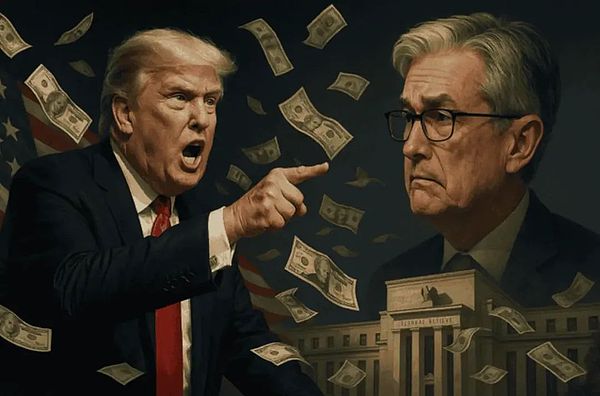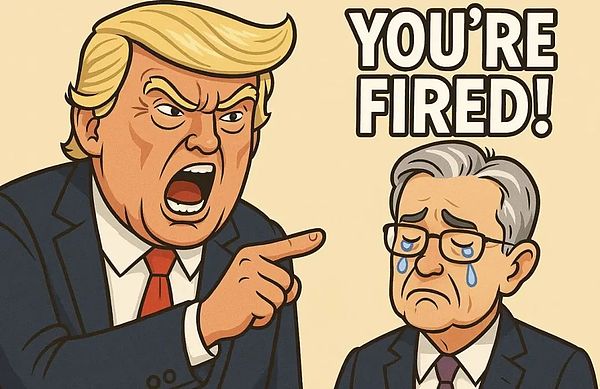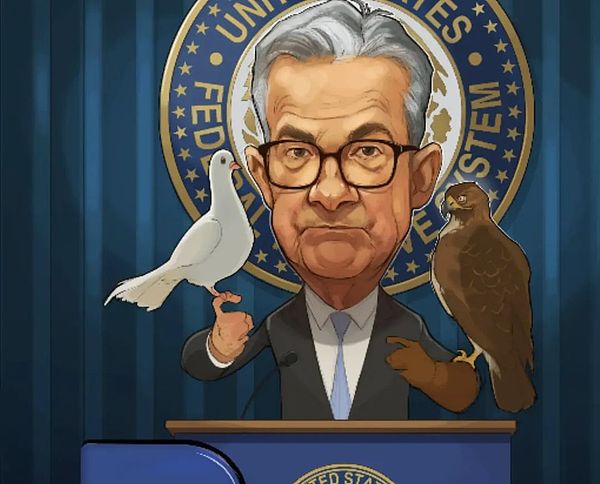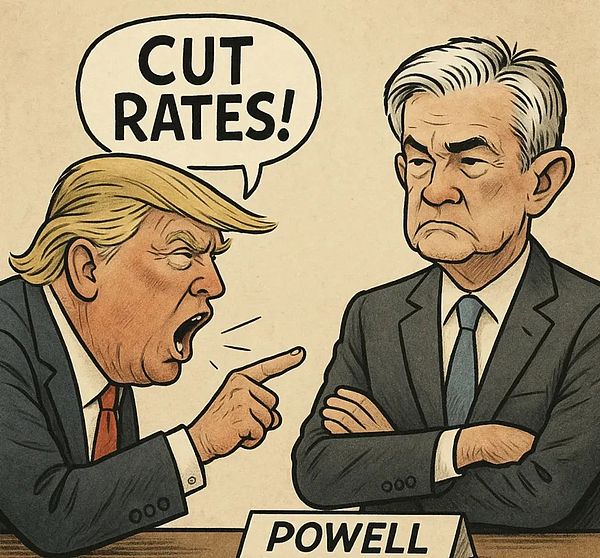Author: Fairy, ChainCatcher
Can "renovation" also remove the chairman of the Federal Reserve?
Trump began to "bombard" Powell during the election, and now he is using the controversy over renovation to "force the palace". This seemingly outrageous political drama is pushing global market sentiment to a critical point.
What kind of pressure is Powell carrying now? If he is really forced to leave office, what kind of storm will it cause?

Trump and Powell: Seven Years of Love and Hate
The conflict between Trump and Powell can be summed up in one sentence: one wants to cut interest rates, and the other refuses to do so. On this core disagreement, the two have been deadlocked since 2018.
Interestingly, Powell's appointment actually came from Trump's appointment. In February 2018, Powell officially took office as Chairman of the Federal Reserve, nominated by Trump. At this time, Trump expected Powell to implement loose monetary policy to support economic growth.
In October 2018, Trump publicly criticized Powell for the first time, saying that the Fed's rapid interest rate hike was the "biggest threat" and accusing Powell of being "crazy." The conflict between the two began to become public, and Trump continued to put pressure on Powell, and the war of words continued.
In 2022, Powell was nominated by Biden for re-election, and his term was extended to May 2026. After entering the 2024 election year, the situation escalated further. Whether during the campaign or after winning, Trump continued to criticize Powell for "acting too slowly and not cutting interest rates effectively." In the past few months, Trump has called for Powell's resignation N times.
However, it is not easy for Trump to replace Powell. According to US law, the president has no right to remove the Fed chairman due to policy differences unless he can produce evidence of "illegal or serious dereliction of duty."
In July this year, the real breakthrough appeared. The Trump team suddenly threw out a "new script": Trump asked Congress to investigate Powell on the grounds of "political deviation" and "making false statements in Congress", accusing Powell of major violations in the renovation project of the Federal Reserve headquarters.
During this period, there were rumors that Powell was "considering leaving", which caused the whole thing to ferment rapidly. Seven years of power confrontation ushered in a climax.

Trump and Powell: Seven Years of Love and Hate
Former Federal Reserve economist Robert Hetzel bluntly said: "The Fed has been forced into a dead end."
Currently, Powell is in the "purgatory" of monetary policy: on the one hand, Trump's tariff policy may bring upward pressure on prices, while on the other hand, the labor market has shown signs of cooling. The double threat has brought difficulties to Powell and the Fed's policy making.
If the Fed cuts interest rates too early, it may cause consumers' inflation expectations to get out of control; if it chooses to raise interest rates to stabilize inflation, it may cause turbulence in the bond market, soaring interest rates, or trigger a "financial panic."
In addition to the economic difficulties, it also faces a fierce political offensive and defensive battle. However, Powell chose to fight back against Trump's pressure. He asked the Inspector General to continue to review the headquarters renovation project, and rarely spoke through the Federal Reserve's official website, responding in detail to the reasons for the cost increase and refuting the accusation of "luxurious decoration."
Caught on both the economic and political fronts, Powell is at a difficult moment in his career.

What will happen if Powell leaves?
If Powell cannot withstand the pressure and steps down, the "pricing anchor" of the entire global financial market may loosen.
Saravelos, global head of foreign exchange strategy at Deutsche Bank, analyzed that if Trump forcibly replaces Powell, the trade-weighted US dollar index may plummet by 3%-4% within the next 24 hours, and the fixed income market will see a 30-40 basis point sell-off. The dollar and bonds will carry a "persistent" risk premium, and investors may also worry about the politicization of the Fed's currency swap agreements with other central banks.
Saravelos further pointed out: "More worrying is the current fragile external financing situation of the US economy, which may lead to more violent and destructive price fluctuations than we predict."
In addition, Padhraic Garvey and other ING strategists issued a report saying that Powell's early departure is "less likely", but if it happens, it will lead to a steepening of the US Treasury yield curve because investors will expect lower interest rates, accelerated inflation and weakened independence of the Federal Reserve. They also pointed out that this will form a "fatal combination" for the depreciation of the US dollar.
The analysis of crypto KOL Phyrex is more risky asset perspective. It analyzed that even if Trump successfully replaced Powell, he might not be able to control the Fed "single-handedly". Once inflation really rises again, the new chairman will eventually have to return to the tightening route. If the Fed starts to cut interest rates in September under the premise of a stable economy and low unemployment, risk assets may be boosted in the short term, and the crypto market will also benefit. But the current interest rate is still 4.5%, and there is still "a lot" of water to be released later.

Powell's seat will shake slightly, and the market will fluctuate. This is not only a game of monetary policy, but also a contest of power and independence.
 Anais
Anais










